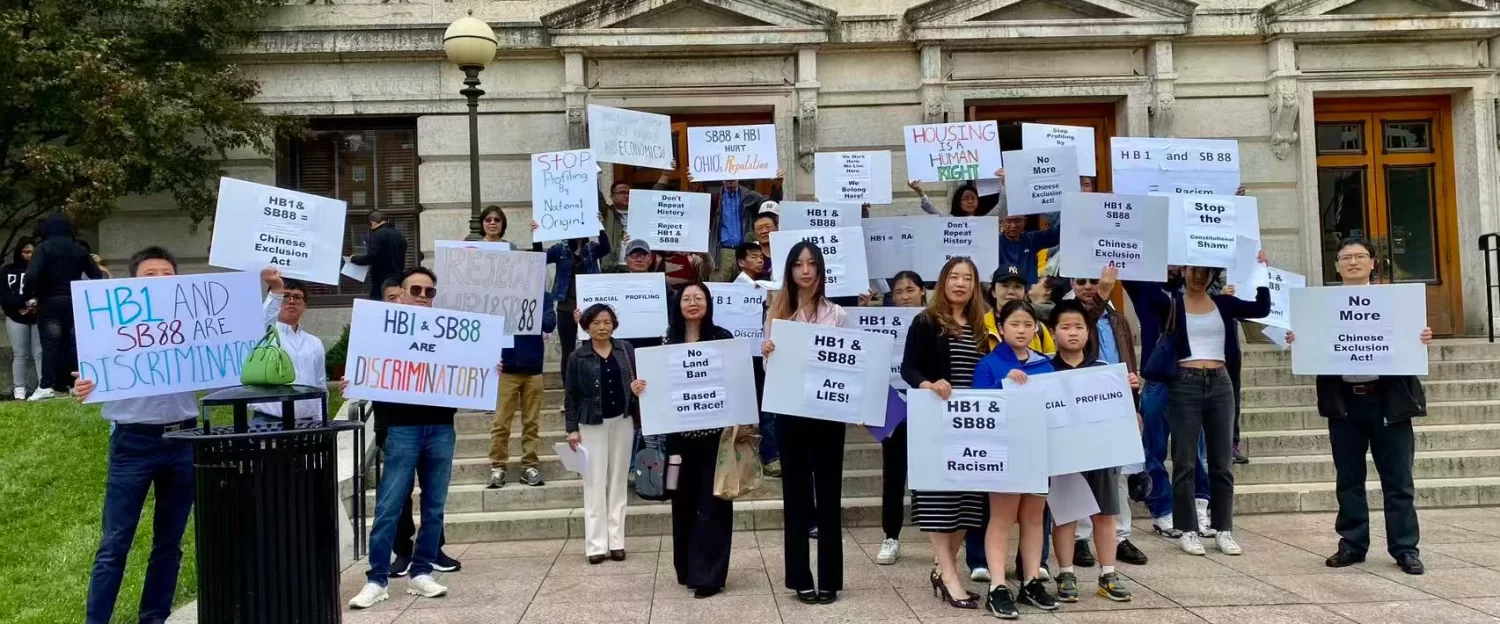What are HB1 & SB88?
House Bill 1, titled the Ohio Property Protection Act, seeks to prevent foreign adversaries and their affiliates from acquiring certain real property in Ohio that is deemed strategically important. This includes agricultural land, properties near military installations, and areas close to “critical infrastructure”. The legislation prohibits individuals, businesses, and governments associated with designated foreign adversaries from purchasing or holding such “protected property.”
Similarly, Senate Bill 88, also named the Ohio Property Protection Act, bars certain foreign individuals, entities, and governments from acquiring or maintaining ownership of “protected property” within the state. These properties include agricultural land and land near military or critical infrastructure sites. The bill defines key terms such as “foreign adversary” and mandates affirmations from buyers and sellers in property transactions involving protected property.
Why do we oppose them?
Both HB1 and SB88 unfairly target immigrant communities under the pretense of national security. These bills revive the discriminatory history of Alien Land Laws, which have been ruled unconstitutional and have long been used to suppress Asian, Muslim and immigrant communities. By restricting land ownership based on nationality, H.B. 1 fosters racial profiling and discourages immigrants from contributing to Ohio’s economy. Furthermore, they may violate the Equal Protection Clause of the 14th Amendment and the Fair Housing Act of 1968, opening the state to costly litigation.
The “critical infrastructure” cited in the bills is way too broad that allows unprecedented overreach of the government – this terminology is defined in existing law (2911.21 of the Revised Code) related to “criminal trespassing”, and includes something like the following in our daily life in addition to airports and railroads:
Water lines and sewage pipes
Telephone poles
Cell phone towers
TV stations
Electric lines
If you draw even a 1-mile radius around these items, there would be nowhere people can own a property in Ohio – let alone 25 miles. Therefore it’s blatantly overreach.

Additionally, they promote racial profiling and xenophobia. By singling out individuals based on national origin, these bills inflame race-based suspicion and encourage discrimination—not just against foreign nationals, but also against American citizens and permanent residents of Asian and immigrant backgrounds.
Furthermore, they also harm Ohio’s economy and global reputation. International students, researchers, entrepreneurs, and workers contribute billions of dollars to Ohio’s institutions and industries. These bills send the wrong message to global talent and foreign investors who see Ohio as a welcoming place to study, build, and innovate.
Finally, they erode social cohesion and public trust. In times of division, scapegoating immigrants and communities of color distracts from real policy challenges. These bills fracture our communities and compromise the values of fairness, inclusion, and opportunity that Ohioans hold dear.
Legislative Process
Before taking any action against these bills, its important to know the process of how these bills can work their way towards becoming law:
Introduction: A bill is introduced by a member of either the Ohio House of Representatives or the Ohio Senate and is assigned a unique number. This initial step is known as the “first consideration.”
Committee Review: The bill is referred to a relevant committee, where it undergoes detailed examination. The committee may hold public hearings, solicit expert testimony, and propose amendments. After thorough review, the committee votes on whether to report the bill favorably to the full chamber.
Floor Consideration: Upon favorable committee recommendation, the bill proceeds to the full chamber for debate and possible further amendments. This stage includes the “second” and “third considerations.” A majority vote is required for the bill to pass in its originating chamber.
Second Chamber: The approved bill is sent to the other chamber (House or Senate), where it undergoes a similar process: committee review, floor debate, and voting. If the second chamber amends the bill, it returns to the originating chamber for concurrence.
Governor’s Action: Once both chambers agree on the final version, the bill is presented to the Governor, who can sign it into law, veto it, or allow it to become law without a signature after ten days. If vetoed, the General Assembly can override the veto with a three-fifths majority in both chambers.
What we have done so far
On May 20th, we attended the 3rd hearing of House Bill 1 in the Public Safety Committee. We had over 100 people show up in opposition of the bill, 68 of us submitting written testimony, with many of us presenting spoken testimony.
On May 27th, we attended the 4th hearing of Senate Bill 88 in the General Government Committee. We had over 300 people show up in opposition of the bill, 308 of us submitting written testimony, and many of us presenting spoken testimony.
Join Ohio Chinese American Council (OHCAC), our task force against HB1 and SB88!
| Bill | House Bill 1 | Senate Bill 88 |
| Committee | Public Safety Committee | General Government Committee |
| Written Testimony | Link | Link |
| Hearing Recordings | Third Hearing Part 1 – May 20th, 2025 Third Hearing Part 2 – May 20th, 2025 |
Fourth Hearing – May 27th, 2025 |








